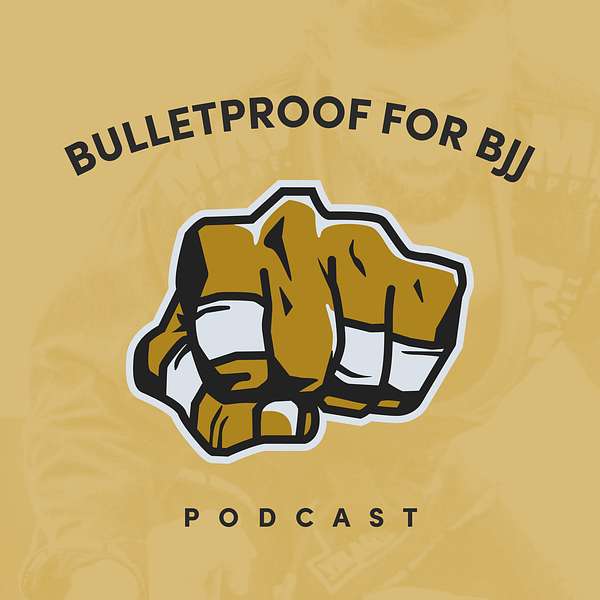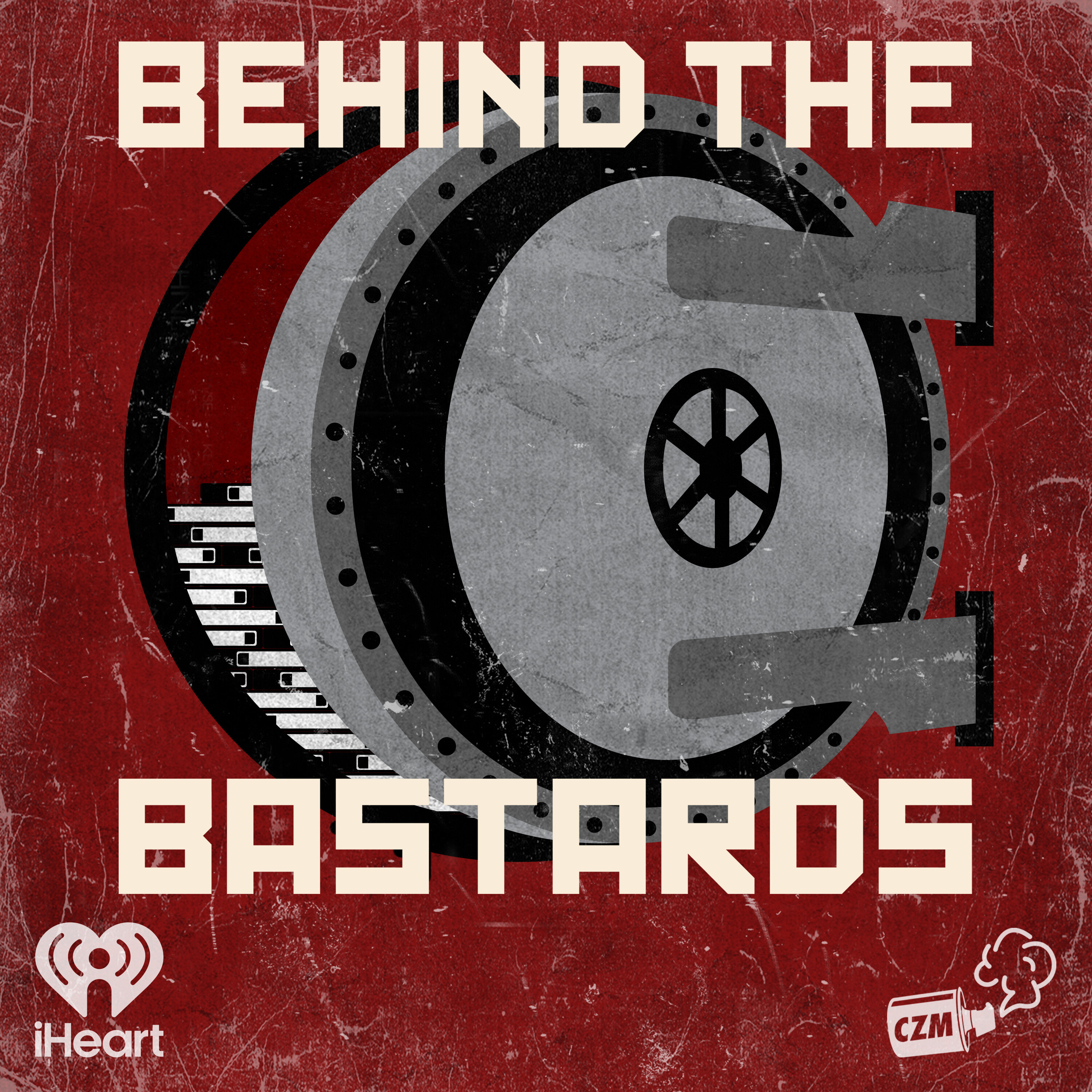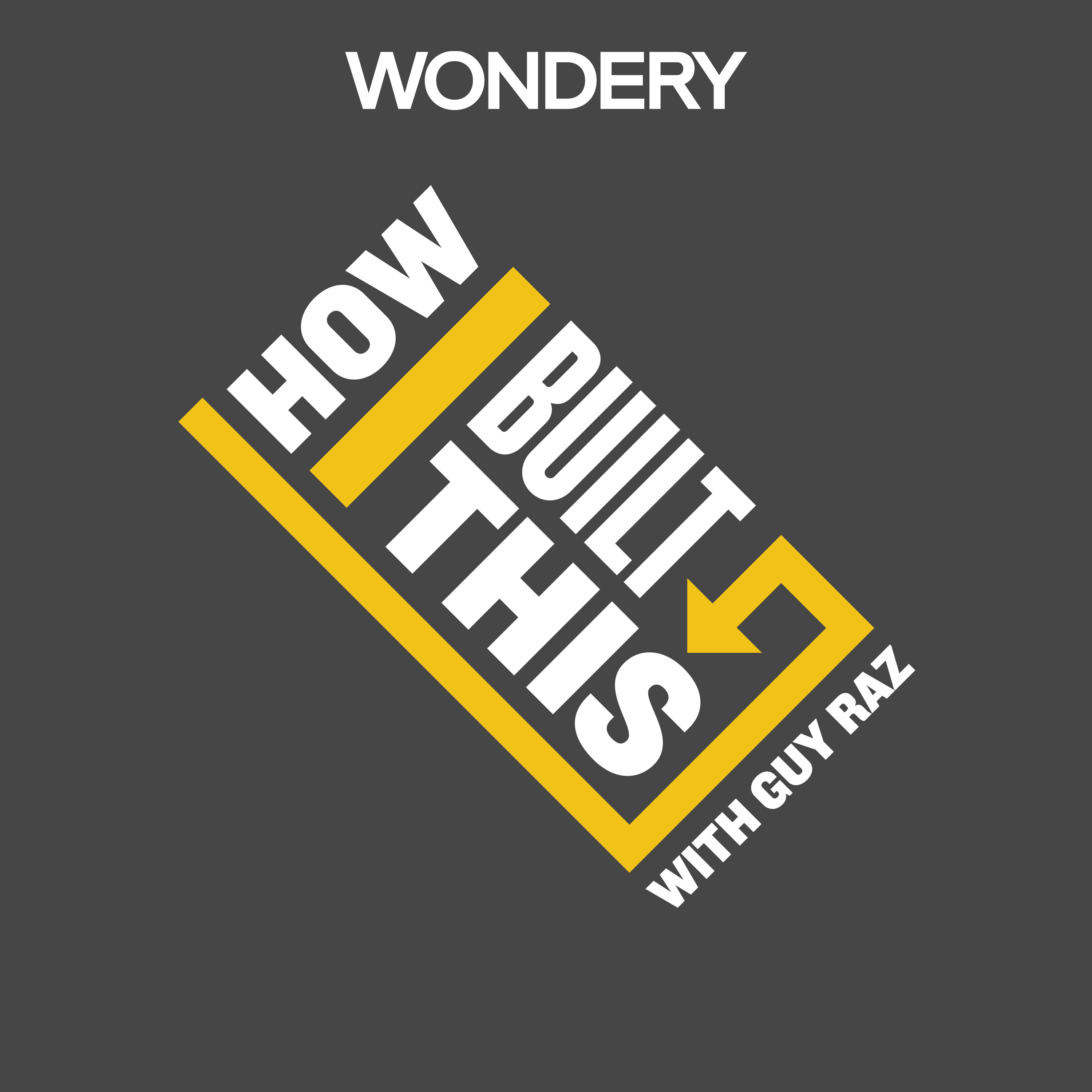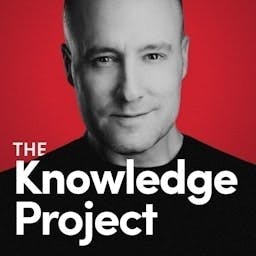
Bulletproof For BJJ Podcast
Discussions on improving your BJJ, navigating mat-politics and all aspects of the jiu jitsu lifestyle. Multiple weekly episodes for grapplers of any level. Hosted by JT and Joey - Australian jiu jitsu black belts, strength coaches, and creators of Bulletproof For BJJ App. Based out of Sydney, Australia
Bulletproof For BJJ Podcast
Before You Continue With Back Pain, Listen To This
Is your back always killing you? Whether it be during the day, straight after class, or while you are rolling, BJJ has been known to induce low back pain. If you would like to alleviate said back pain, watch this podcast as we talk about the problem areas and bring solutions to each one.
----------------------
BULLETPROOF SHIRTS: https://www.fanwear.com.au/products/core-bullet-proof-for-bjj-classic-tee
----------------------
Increase athleticism, reduce injuries and build a grapplers physique with the Bulletproof for BJJ App. Start your FREE 14 Day Trial today:
iOS: https://apps.apple.com/us/app/bulletproof-for-bjj/id6444311790
Android: https://play.google.com/store/apps/details?id=com.bulletproofforbjj&utm_source=na_Med
Stay Hydrated with Sodii the tastiest electrolytes in the Game! Get 15% OFF: BULLETPROOF15 https://sodii.com.au/bulletproof
A good martial artist does not become tense, but ready. Essentially, at this point, the fight is over, so you pretty much flow with the goal. Who is worthy to be trusted with the secret to limitless power? I'm ready. You ever woken up in the morning after jujitsu and had your lower back kill? You Felt like you got hit by a train and can barely get out of bed. I've been there and there's a few key reasons as to why you may be feeling this way, and it's not necessarily your lower back. We're going to run the checklist on BJJ lower back pain. Let's unpack it, let's get into it now. So there are a few things that contribute to you having lower back pain and it's not necessarily the back itself. Number one tight ass glutes. Having the tight glutes limiting your hip range of motion can overload the lower back. So tight glutes for me, this is one of the number one things for people in jujitsu. They're really good at some things, but you ask them to stretch their hips and they really struggle.
Speaker 2:You've seen this before, Joe, yeah for sure, like, um, you see it a lot with their external rotation of the hips, uh, that like they're super restricted there and and that that like the whole like glute region really ties into the lower back. And I find that generally, if you can loosen up the glutes a little bit, the lower back pain or discomfort that was there before just kind of magically disappears.
Speaker 1:Yeah, it alleviates. And so you know, check this, this might be you. You had a great session at jiu-jitsu the night before. You've gone hard, the adrenaline starts to wear off after class. You go to the car, you drive home, you go get out of the car and you're like, oh, back's a bit stiff. You think, ah, it's not too bad. You know, you have dinner, you sit down, maybe a bit of TV play with the kids, whatever's going on, and then, just as you're getting into bed, you think, oh, it doesn't feel great. The next morning, getting out of bed, your lower back is aching.
Speaker 1:For me, one of the first things I do, if I ever end up in this situation, is I will go to a form of pigeon stretch. So, whether it's more of an active pigeon, uh, where you're opening up through the hip, or an elevated pigeon, which I usually do it on the back of the couch, where you elevate the leg, fuck it, I'm gonna do it now. Wow, check this out, this shit's live. Wow, you can see it right here. Ladies and gentlemen, check this out, this shit's live. Wow, you can see it right here. Ladies and gentlemen, leg up on the couch, leaning forward, just like this Elevated pigeon baby. Look at that.
Speaker 2:This is fucking money For the glutes I'm working a pigeon right now On this leg right here. You guys don't even know I'm 24-7 On this mobility shit.
Speaker 2:You're never not Pigeoning baby Just push that knee, but yeah, no, it's a great one. I find too just getting on like a lacrosse ball or something hard and just like fucking finding the sore spot in the glutes. It's a super lazy and easy way, especially if you're chilling and you're like in front of the telly. Yeah, you know, I'll get on top of a fucking little Lego mountain that my son's built, just jamming in there.
Speaker 1:Yeah, and and really what we're talking about here is blood flow. The blood flow is going to help open up the connective tissue as well as get the hip moving, which then alleviates the symptom, which is the lower back pain. Yeah, it's not necessarily the root cause, and that's what we're getting into with this information.
Speaker 2:Yeah I think it's important to mention. Often what we perceive as lower back pain, we visualize like spinal damage, yeah, and you're like, oh my god, and, and you know, it happens to all of us and you're like oh my god, I've actually. My spine is like fucking injured. It's generally not like it's generally that's not the case. It's the soft tissues that are somewhere around it, correct?
Speaker 1:and so number two on this one, which is something that we're all aware of, but we just fucking ignore it in jujitsu, hip flexors.
Speaker 2:I don't think we're all aware of it.
Speaker 1:Well, okay, so you think about the bulletproof initiated? No, sure, but it's definitely become, I think, more prevalent in knowledge within folks that do jujitsu. If you play guard, you get tight hip flexors. You know anything that requires you to keep your knees up by your chest. You're tightening up through that front section. Now some people will argue that tight hip flexors actually result in them being weak Potentially right, but that's not what I've found.
Speaker 1:Most jujitsu folks have got pretty strong abs. They got pretty good through the hip flexors, so they're good at pulling their knees to their chest. But what that means is when you go to stand up straight, your lower back you're pulled into this kind of lordosis, this kind of anterior pelvic hip tilt, and it overloads. The lower back is overloaded because your hips are in this flexed position, kind of residually. You're getting lower back discomfort and you've got to be able to open up through those bad boys. So my number one stretch, or my number one movement for that, is the couch stretch or the kneeling wall stretch, however you frame it, yeah and um, for for a lot of folks it is a pretty easy thing to do, but we just don't, and so this is the challenge.
Speaker 2:Yeah, it's probably the number one for me that I would do more than any other stretch is just get up against the wall and open up the hip flexors. I actually had it. I'm trying to remember I had it doing something at the gym yesterday where I came out of it, the set, whatever I was doing, and I could feel my hip flexors kind of cramping just on one side. I was doing something seated. I think I was doing some tricep work actually overhead barbell.
Speaker 2:You were tensing up so hard, yeah. And then when I come, I was like, oh, I could feel and it's obviously because my hip flexors were contracted during the movement and so and they're probably fatigued and you know, and so you get this sort of like little cramp, this little kind of neurological kind of thing. Um, but it just made me think, like, like.
Speaker 2:That's kind of what's happening to us all the time on the mats if you're playing a lot of guard and and you like, you're really asking those tissues to shorten for long periods of time, and so it follows that when you walk off the mats and you go for the rest of your life, they're going to be in a shortened position. That's going to be their bias, and so that does pull your pelvis into that position, which places extra load on the lower back.
Speaker 1:For sure. And so just taking a little bit of time and we're not talking like, oh, you've got to go take up yoga, or oh, you've got to have some crazy routine Literally Five minutes, five minutes or less, yeah, or whether you do it when you get home, after the shower, whatever, or you do it after class, whenever you can do it. Spending some time extending your hip, getting your glute to contract and open up through the hip flexors, is going to give a ton of relief to the lower back area.
Speaker 2:Yeah, this is the idea of like using a bit of a mobility practice to reset your tissues after training. Yeah, just so you're not carrying your fucked up pretzeledness into life the rest of your life.
Speaker 1:You reset it after training and then shit's like ironed out yeah, and this is going to save you the pain the day after jiu-jitsu. Now number three uh, sounds a bit strange, but we're going to talk about lateral flexion. What the fuck is lateral flexion? We're talking about side bending.
Speaker 1:So even though you might be doing a bit of side bending when you're playing guard or if you're trying to do a throw, it's rare that we spend time there and open up through the obliques and medial glutes and lats and QLs, because it's a very vulnerable position we feel. You know you start to do it, you're like, oh, that's very uncomfortable, but because we do tighten up through this area, if we don't spend time actually moving the spine through these ranges, when you get forced there by an opponent, someone passing your guard maybe it's Adam Childs, because he's got a crazy fucking cross face and he fucking bends you like a pretzel that's going to make your back ache and actually you have to actually spend a little bit of time going there under your own volition, your own control, so it doesn't break you. And this is the thing.
Speaker 2:Yeah, that whole. Like we don't really think much about the side of the body generally, but like you've got, like jt mentioned, the whole side of your torso is full of muscle and then that goes down into your hips. Right, there's, you got a whole bunch of muscle going down to the side of the hips too, and like we use all of that muscle a lot in jujitsu, more so than a lot of other sports, right, um, it's great for it to be strong, but if it's not pliable, like if you can't move well through there, you you're fucking making yourself real rigid and you're exposing yourself to other inefficiencies right where, like, oh, my lower back sore because this shit's not moving properly yeah I find that like spending a bit of time lengthening it, be it under load, in like a windmill or something, or just stretching it like a side hang cobra.
Speaker 2:Yeah for sure Fucking goes such like it's so relieving. Yeah, everyone, every grappler you do, is like man, like it's like you've just opened up a new facet of life for them.
Speaker 1:You want to get better for jujitsu, but you're not sure how? I have the answer for you. The Bulletproof for BJJ app is the perfect mixture of strength, mobility and recovery, all tracked in one place. It lets you know what you need to do, when to do it, and it keeps track of it for you. That way, you get better and stronger sooner, so you can roll better on the mats. Now here is the cool thing. Once you are in the app, you get access to myself, joey Raylene and our other advisors in the group that can help you with your technique, give you feedback and keep you on track. So if you want to get a piece of this secret technology that's going to help your jujitsu, all you have to do is search Bulletproof in the app store or the play store and you can get your 14-day free trial right now. You pay nothing and here's the thing there's no risk because it is 100% money-back guarantee. You try it. If you don't like it, we'll give you the money back. So do it today. Get amongst it, download the Bulletproof for BJJ app and we'll see you on the inside.
Speaker 1:Yeah, and that's the thing about it. If we think about a hurdler stretch, you're going to go one leg straight, one leg bent and you're kind of leaning over the side. It looks like some 1970s stuff, but that position is fantastic for opening up your hip and also through your obliques, and then just leaning to the side and letting yourself just kind of open up through there. It's so simple, but you do it and you get massive relief from this discomfort that we say is our lower back, but maybe is your internal obliques, or it's your QLs, or it's a bunch of stuff which could be. How can we say your body is compensating to protect you, but it's leaving you in a lot of discomfort and so you've got to say, hey, buddy, let's chill, let's, we're safe here, we're not dying now, we're not getting cross-faced, we're not getting smashed. We've got to relax so we can get the blood flow in there to help the muscles.
Speaker 2:You know a nice one for that that I don't get to. Alan Price props it quite a lot. Okay, is the um? Is like the um side back extensions.
Speaker 1:Oh yeah, yeah, like an oblique raise type yeah.
Speaker 2:But you need, but it's ideal to have that sort of 45 degree inclined one yeah. Which, like at my gym there's a, there's a GHD and it's a little bit hardcore. Yeah, you know, like it when you got that incline one, because you get that nice stretch at the bottom position and then the shortening at the top, like, yeah, it's a fucking great way to nourish that range of motion.
Speaker 1:yeah, get the blood flow in there, strengthen it and stretch it. Yeah now, number number four is tight lats, this came up. Uh, speaking to a friend of the pod, shout out michael, michael flanagan, how you doing.
Speaker 2:Oh, my fucking message me just this morning. Yeah, legend.
Speaker 1:He's a tight lat boy Right and he's, you know, he's had his own troubles with the world Working that farm.
Speaker 2:He's on the land, you know, On the farm life. Yeah.
Speaker 1:He's an active human, got kids doing jits, doing standards. You know the guy's, he's active. But the thing is your lats originate. Oftentimes we think of the lats as the meat under our armpit yeah, like lats spread big back. But your lats originate down around like L4, l5, like they're down around the bottom of the pelvis. So typically when we stretch our lats we think about stretching up here.
Speaker 1:It's rare that we get a full stretch and go all the way down to that point around the lumbar spine. And what I find is when I do get people doing lateral flexion stuff and opening up through the lat and really stretching the lats whether it be hanging or any other way to stretch the lats they get relief in the lower back. Now the lats, I would say, are like some of the most overused muscles in jujitsu, because we're always pulling, we're always like it doesn't matter if it's gi or no gi, whether you're tying up, standing up, wrestling double legs, fucking passing the guard, gripping the gi, forearms and lats get fucking pumped and, as a result, tight lats can also lead to lower back discomfort fucking pumped and, as a result, tight lats can also lead to lower back discomfort. So the simplest thing I like as a lat stretch is actually a supinated grip hank like it's.
Speaker 1:It's so simple my friend's facing you because having that external rotation gives like biggest range of motion and stretch through the shoulder and and also a bit of decompression so that's the benefits of the hang, that's what I like there have you got? Have you got something for the last show that you like?
Speaker 2:you know, I probably just use um, like you were describing before, like a side hang, using it, using a pole yeah I just use that, but I just like sort of explore around the position, turn the hips to get, and you can kind of you can target like different sections of the yeah, that's, that's. Yeah, that's where I need it.
Speaker 1:Feel it a bit more yeah, and look, side hanging cobra is is like that's quite advanced, but that's like the absolute lat oblique lateral stretch actually actually just built some side hang cobra into um the new standards 2.0 for for the beginner, for the beginner level, oh yeah, I'll tell you more about it yeah but you know where else I think probably hits that a little bit would be at the lower portion of the lat would be jefferson curls, do you think?
Speaker 2:oh yeah, you're probably getting into that jefferson curl is almost like a um.
Speaker 1:It's like an inverse hang. Yeah, instead of you just hanging your weight straight down, the weight is pulling you forward and that is definitely pulling through the lats and you've got that flexion piece through the spine. So there is that for sure. Um, and now the fifth, the last but the not least, is rotation, and this is where everybody fucks up. We use it in our jujitsu warmups, we use it when we're rolling, like we do crazy stuff flexion, rotation, inversion. We're doing crazy shit with our spine.
Speaker 1:But here's the mistake we make that leads to lower back pain. When we're not doing jujitsu, we're very stationary. You know, you go to war on the mats and then you sit in the car and you sit at the office, then you sit in traffic, you sit on the couch, you sit, you sit on the couch, you sit, you sit, you sit, and it's very rare that you see people exploring rotation not only through the upper back but through the hips and the lower back. And so side-lying rotation is one of my favorite positions, not only because it helps open up through the shoulder, but having that knee rolled across and having like hips going one way, shoulders going the other way really helps create length through the lumbar area, while I mean sometimes your hips are a bit tighter, the shoulders a bit tighter, but the spot you feel it is your lower back.
Speaker 2:Yeah, it's that. Um, for me it's like, yeah, it's the whole spine. You know, mid I usually get the nice little pops in the mid spine. Yeah, yeah, it's the whole spine, you know, mid I usually get the nice little pops in the mid spine.
Speaker 2:Yeah, yeah, it's the Chinese burn of spinal stretching. He just got a little chiropractic. I don't know, yeah, I don't know if they would have called it in the States, but we used to call it a Chinese burn at school. When you grab someone's arm and you twist in two different directions, bully tactics. This is, yeah, that's I mean that's like that fucking stretch, bro. I showed it to another person at jujitsu the other day. Yeah, I was like trying to roll these back out. I was like, bro, give this a try.
Speaker 1:Yeah, and it's just multi-leveled because because for everyone, you may be experiencing lower back pain for a variety of reasons. The reason why that sideline rotation movement is so great is if your restriction is in the upper back, the movement. Movement will help unlock that, which will take pressure off the mid and lower back. Or if your tightness is around the hips and the glutes and the legs, being in that position will also help that go to a position that stretches. So by doing these two things together, it's super high leverage, which will allow your musculature and connective tissues to kind of just get a bit more space, get a bit more blood flow and nourishment I think is a very good word you used before, joe that that will help these muscles repair, help them relax. So when you go to stand up and move you're like, wow, my back feels healthier, it feels like I can fucking use it for life, which is what we need when we're not being savages on the mat. Yeah, you gotta look after your shit.
Speaker 2:that I mean we don't think about moving the spine, right? No, and yeah, you get moved around in jiu-jitsu, but you build up also a lot of tension and you build up a lot of sort of imbalance in a way, because sometimes you're just getting fucking like mashed into one particular extreme position for like 10 minutes A long time. So the idea of having some kind of practice that's allowing you to visit all of these ranges of motion with your spine goes such a long way to just having a back that doesn't give you pain.
Speaker 1:That is the checklist, folks, the five things you need to be doing to keep your lower back happy and healthy. Do them, thank us later.





